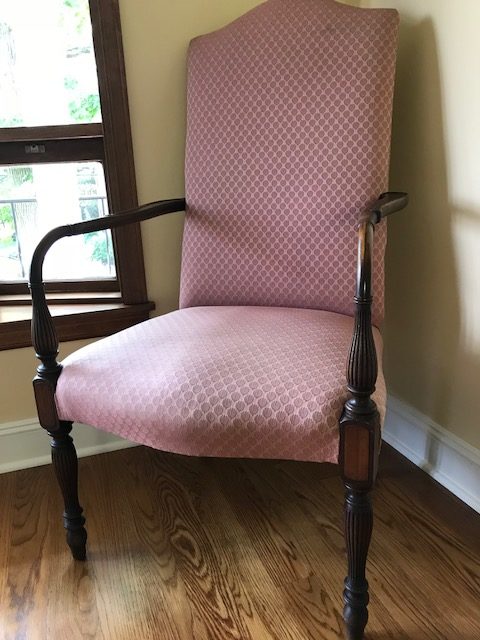Federal vs Sheraton?
I recently received a reader question that piqued my curiosity about furniture styles. This is a photo of Angela’s chair, followed by her story about it:

Angela’s chair
I was raised with antiques but I suppose I took them for granted! I recall one of my first thoughts when my dear Mom passed, looking around the room, which was “I know Mom said that was Grandma’s China cabinet, but which Grandmother?”… I would like to know what your thoughts are regarding the style (of this chair) given the arms & legs…
How to be a Furniture Detective…
… is actually the name of a book by Fred Taylor in which he identifies “Elementary” Clues to
Solving the Mysteries of Furniture. I highly recommend it. Here’s an excerpt from the book that sheds light on the question at hand:
Federal 1780-1820
An anonymous adage in the newly formed republic of the United States of America in the 1780’s was “The Revolution is won and Chippendale is done”. And so he was. But not the continuing influence of imported styles.There is a tendency to call all furniture made in the forty years after the Revolution “Federal” furniture. But that is misleading because there was no “federal style” per se. There was a shift away from the rococo of Chippendale to a flatter, leaner look that somehow represented the new Republic. That look was found in the works of several noted English designers of the period, notably Thomas Sheraton, George Hepplewhite and the Scottish architects, the Adam brothers.
The most recognizable piece of the period is the distinctive “shield” back chair which carries Hepplewhite’s name. This type of chair usually has the square tapered leg of the Hepplewhite style. Sheraton is associated with the square back fancy chairs of the period with round, tapered, reeded legs…
The deduction
From the photo evidence provided by Angela, then, I would draw the conclusion that the chair is Sheraton – and could also be said to have originated in the Federal period. I am not an expert in furniture periods and styles, so if you have evidence to add, please share it in the comments below.
Additional reading:
- Clues to Chair Identification – Leg Shapes
- Understanding the American Federal Furniture Period
- Identifying Sheraton Style Antique Furniture
- Federal furniture: One of the most elegant American furniture styles
- The Interior Designer’s Glossary
Join our mailing list to learn more about upholstery, furniture styles, and how to use natural materials.
Leave A Comment